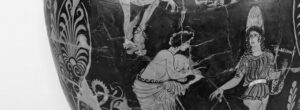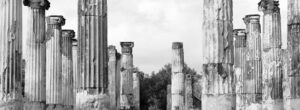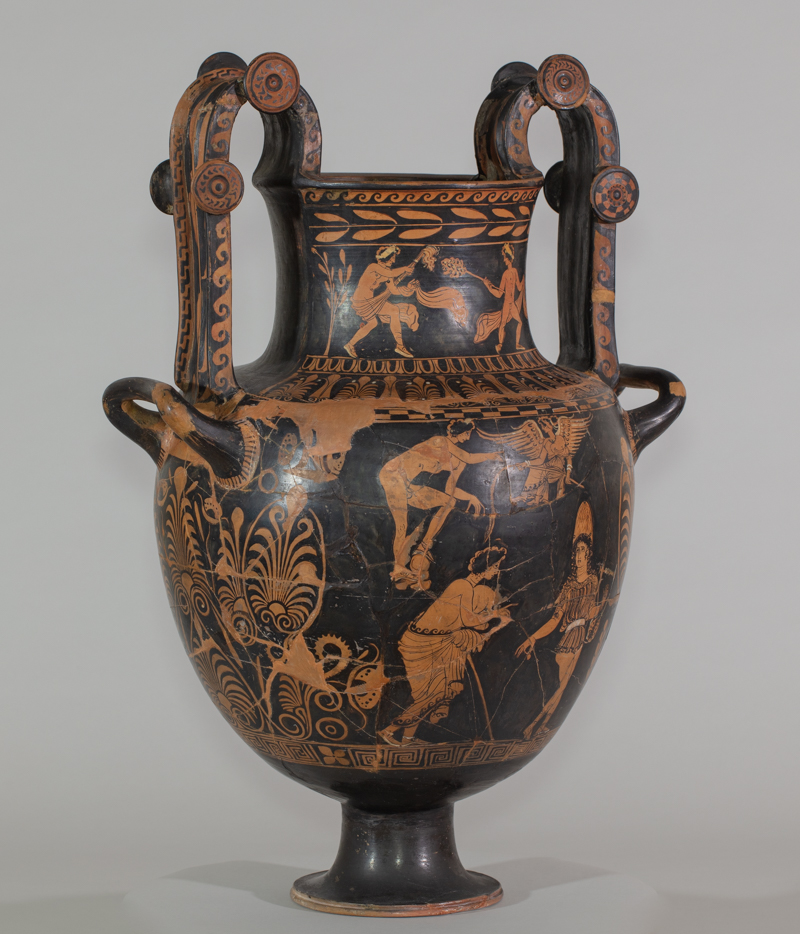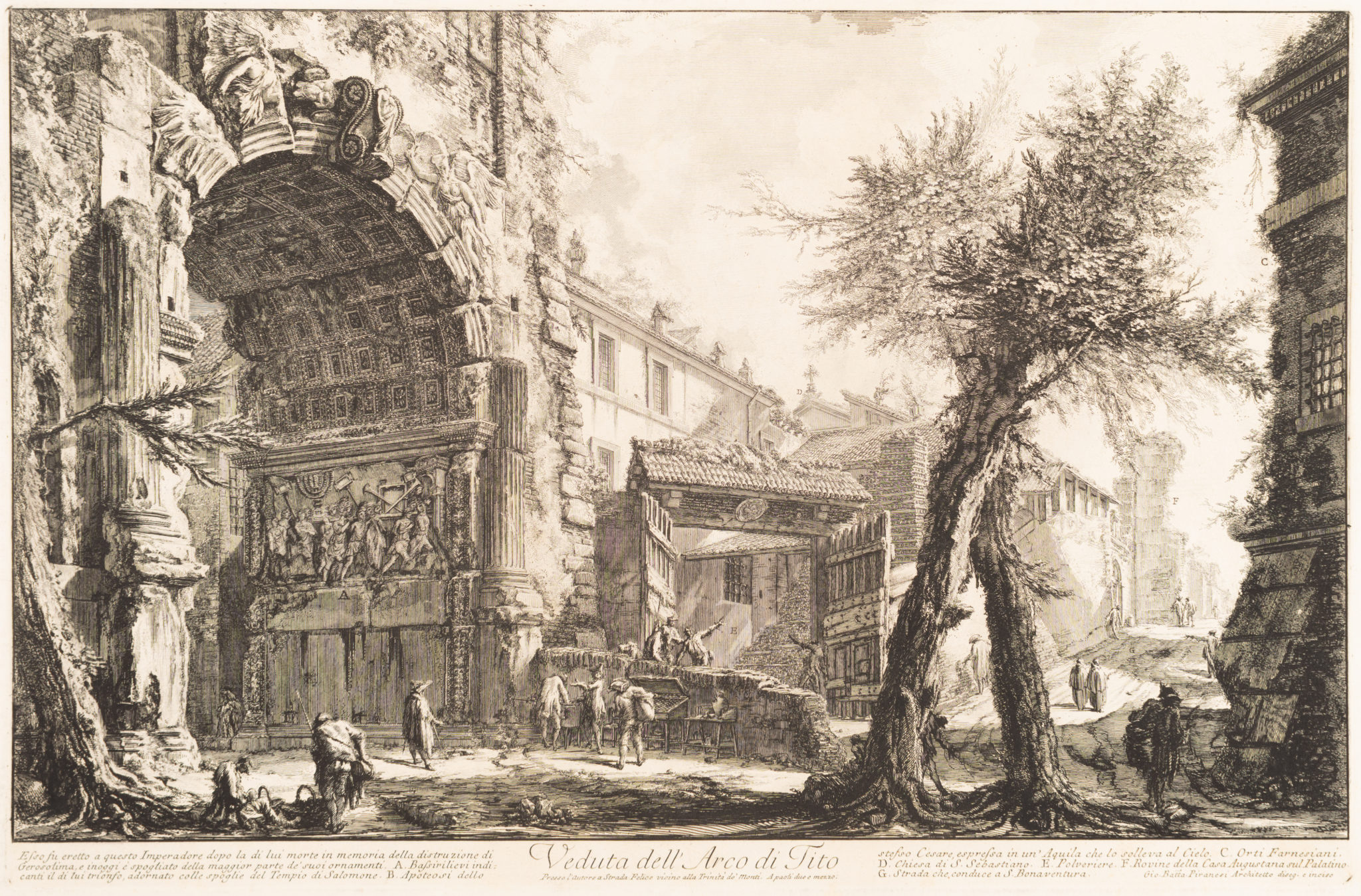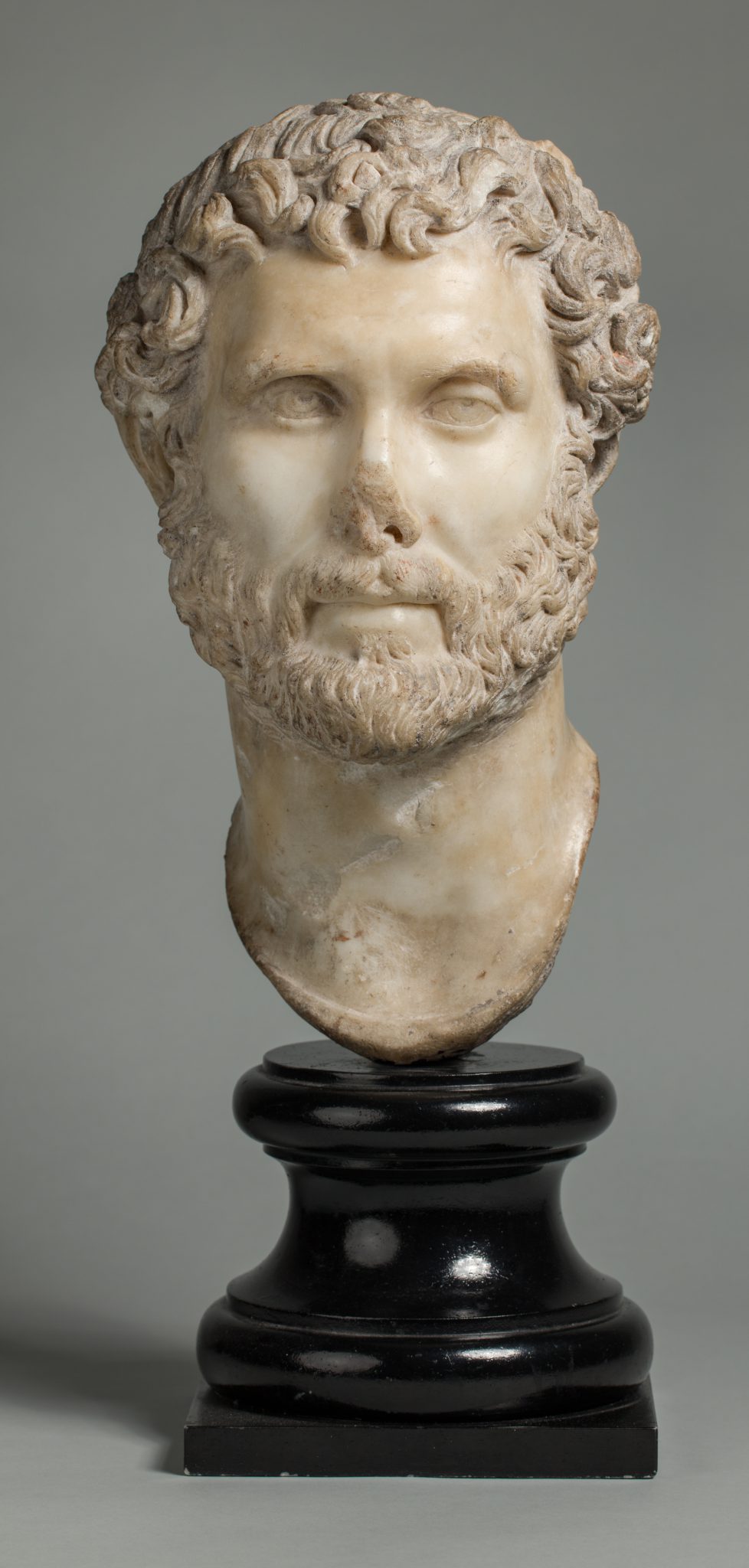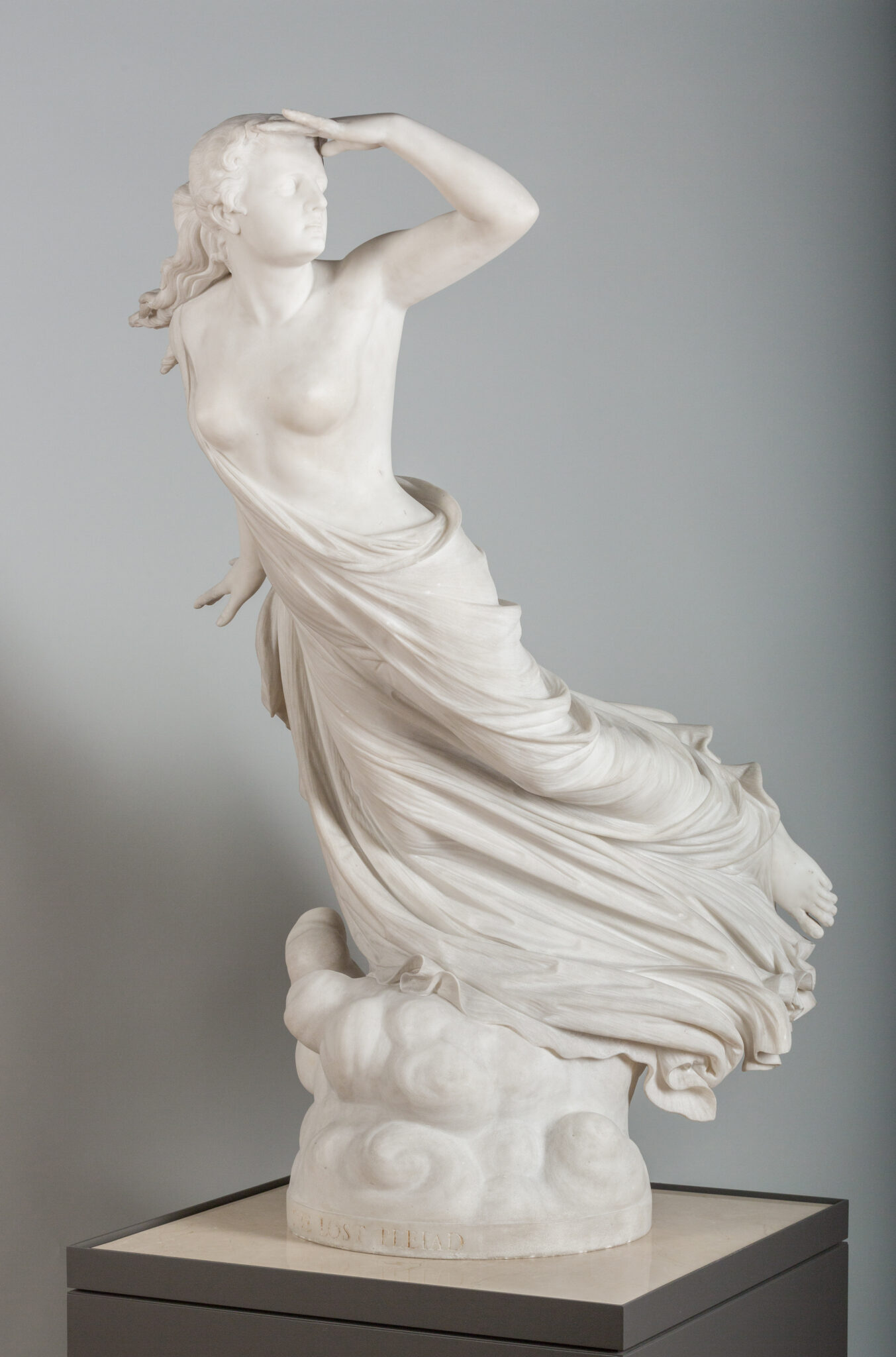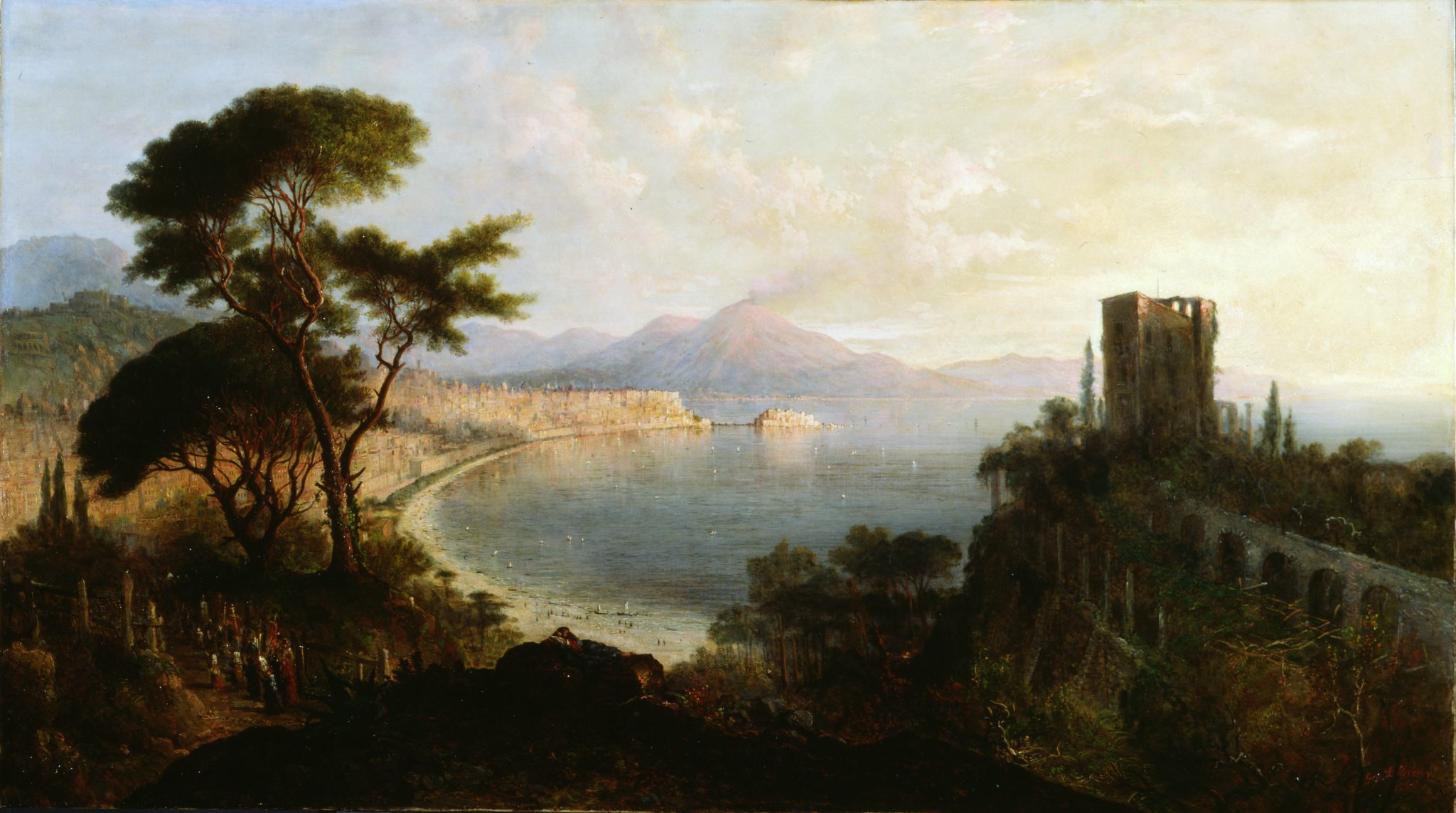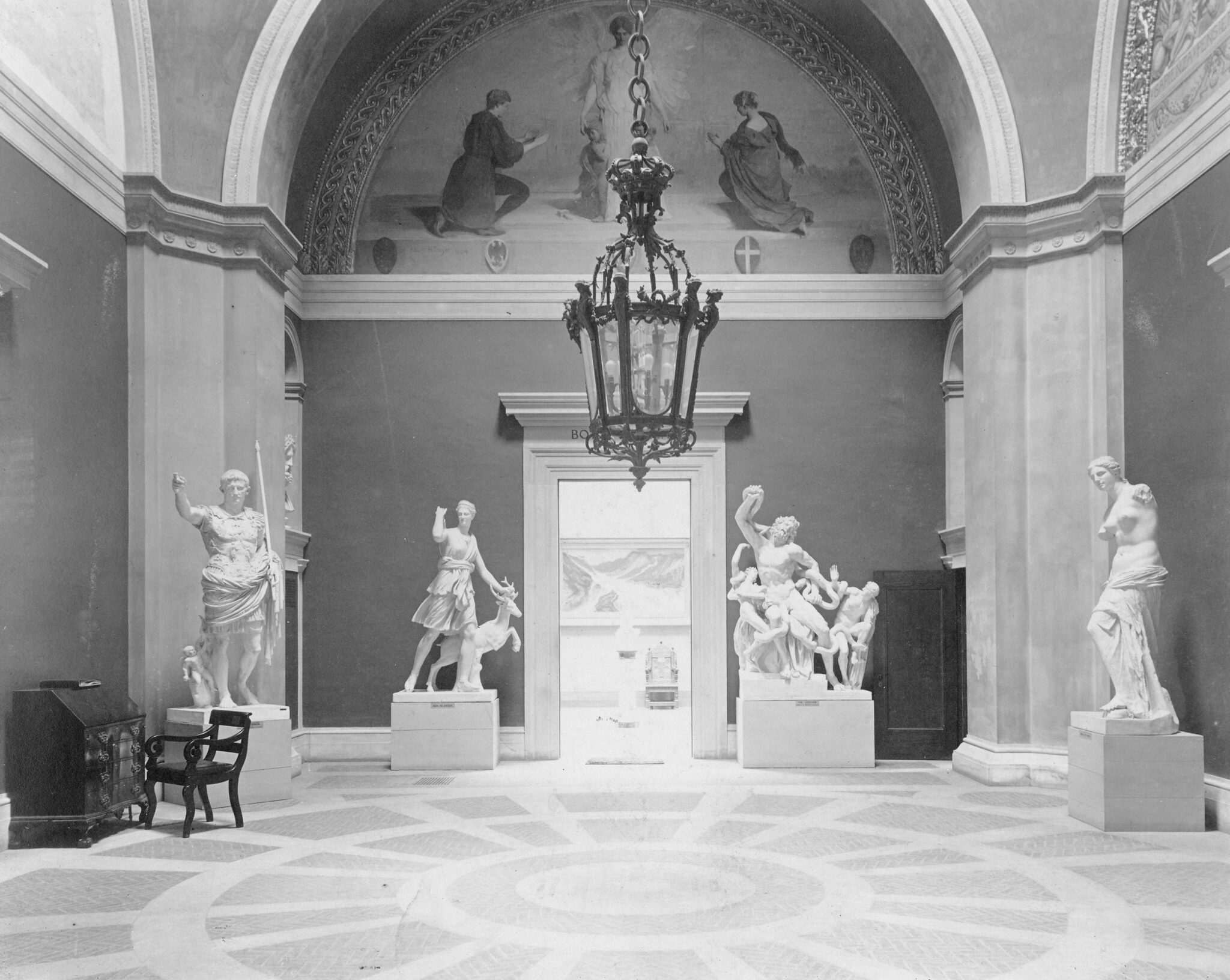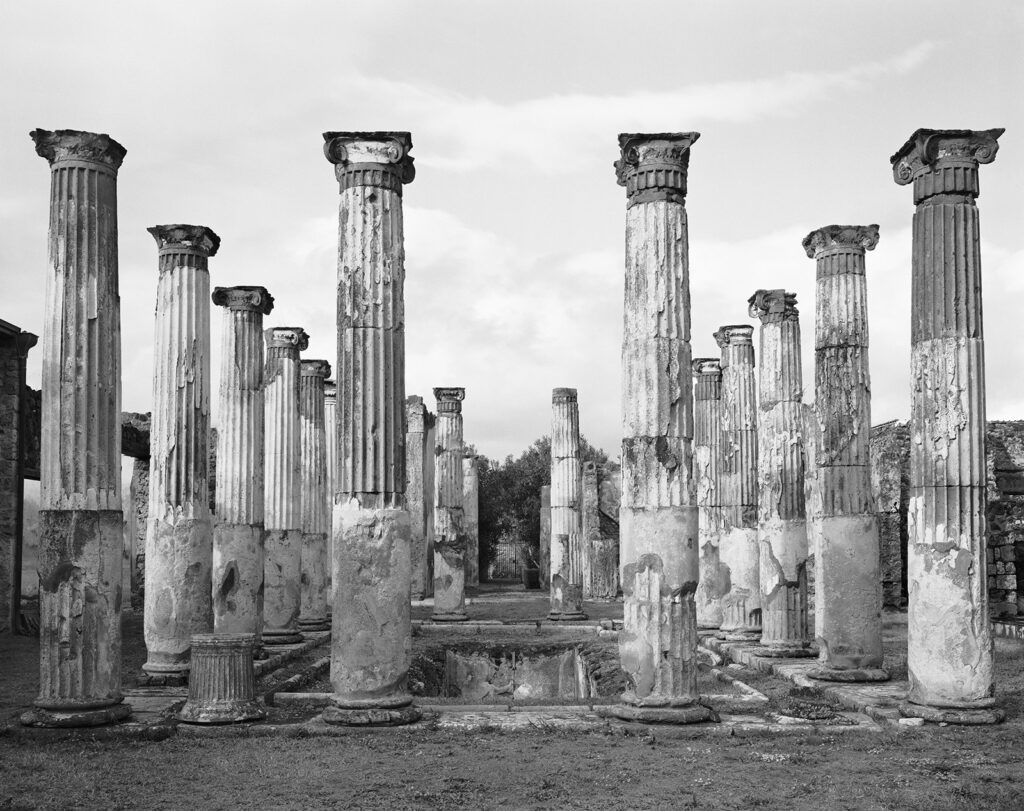The Gilded Age represented America’s coming of age, not only on the world stage but in the development of fine arts and culture. During this period, America’s population more than doubled, transitioning from a largely rural to predominantly urban populace. Technological innovations such as electricity, plumbing, the telephone, and the automobile wrought major changes in lifestyle and mobility. The refinement of the steam engine made travel to and within Europe accessible to progressively more Americans. At the turn of the nineteenth century, Americans travelling to Europe numbered in the few thousands every year; at the height of the Gilded Age, nearly one hundred thousand Americans were annually making the trip. Tourism to the ancient sites of Europe and the Mediterranean, however, remained exclusive; only a fraction of Americans travelled on this prohibitively expensive voyage that far exceeded the annual income of all but the incredibly wealthy until well into the twentieth century.
Much as the upheaval the Revolutionary War saw the birth of a nation, social changes in the wake of the Civil War ushered in a period of rebirth and reinvention. More and more Americans began to join the scores of authors and artists who had visited (and sometimes never left) France, Italy, Spain, and Greece. American tourists found both themselves and Europe changed, and the terms of the encounter shifted. Americans were newly wealthy and more confident of their own national identity, a hard-won outcome of the Civil War. They also encountered a Europe whose political institutions were tilting inexorably in favor of Republicanism, with new nation states founded in Italy (1870) and Germany (1871) as well as the fall of the Napoleon dynasty and the establishment of the French Third Republic (1870). The adventures of Americans in Europe during this period are captured in the writings of American authors like William Dean Howells’s (1837–1920) Italian Journeys (1867) and Roman Hours (1908) and Henry James (1837–1916), who, in dozens of novels written in the late nineteenth and early twentieth century, chronicled the European experience of Americans, their passions and prejudices, and the spirit of the times.
But Europe was not the only destination. Americans were increasingly adventurous, such as Mark Twain, whose expansive itinerary included not only France and Italy but also Morocco, Greece, Turkey, and Palestine. Travel into the eastern Mediterranean, to Asia minor and to the Ottoman lands of Syria, Lebanon, and Palestine, was a natural extension of earlier travels in Italy. For many Americans the ancient Greek and Roman histories and the biblical histories were a contiguous part of the same historical whole: the rich fabric of antiquity. Premonitions of this can be seen in the collecting habits of the earliest generations like James Bowdoin III (1752–1811) who looked with equal favor on scenes of classical myth and biblical lore.
At the same time, the classical curriculum was increasingly abandoned in favor of courses in “practical knowledge.” Colleges and universities across the country began offering alternative paths to degrees that did not require as much (or any) study of ancient Greek and Latin literature. In 1895, Bowdoin abandoned Greek as an admissions requirement (though it was not until 1943 that Latin was removed as a requirement for admission to the Bachelors of Arts degree program). No longer widely accepted as a prerequisite for a successful career, the study of ancient Mediterranean art and culture was increasingly professionalized and siloed as a discipline within the university. The emergence of classical archaeology and the study of ancient Mediterranean art and artifact as an academic discipline and companion to the study of texts emerged in the latter half of the nineteenth century. This is when the disciplines of art history and classical archaeology both came into their own as rigorous academic subjects, concerned with classifying, cataloguing, and periodizing artistic styles, trends, and evolutions.
While antiquity began to lose its foothold in academia, the public began to encounter the ancient Mediterranean more and more through art and artifacts: the domain of museums. It was the Gilded Age that gave rise to the American museums and institutions dedicated to the collecting and study of the ancient world. Most major American museums with global collections were established during this period including the founding of both the Museum of Fine Arts, Boston (MFA) and the Metropolitan Museum of Art in 1870—both of which emphasized the collecting of ancient Mediterranean antiquities in their earliest years. All were devoted to the telling of a certain linear narrative of art history, with high points in art achievement being located especially in Greece and Rome.



